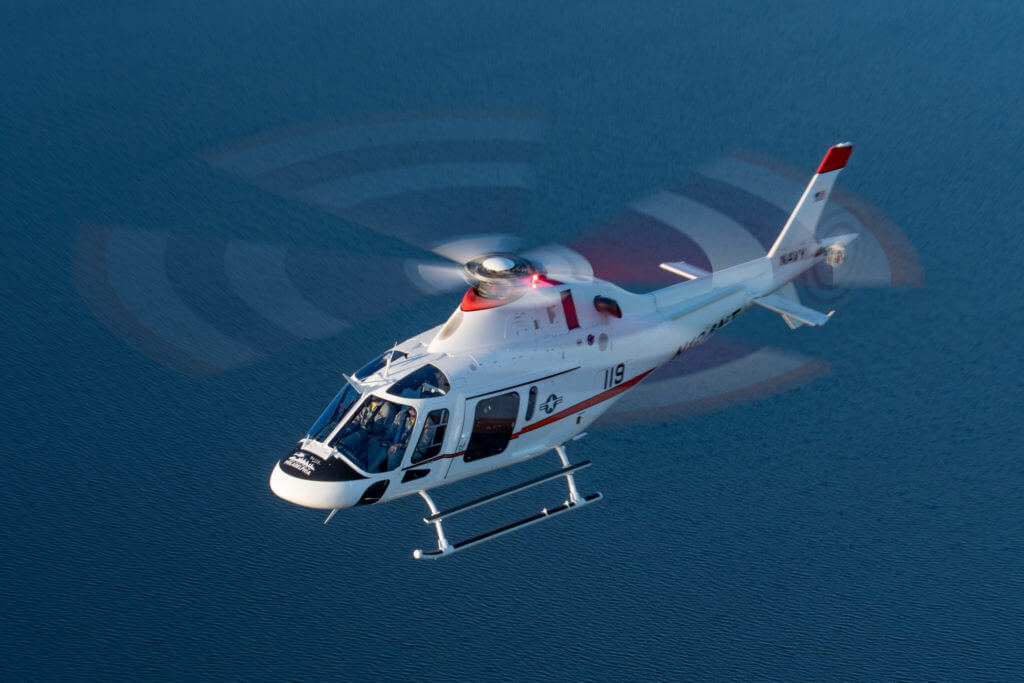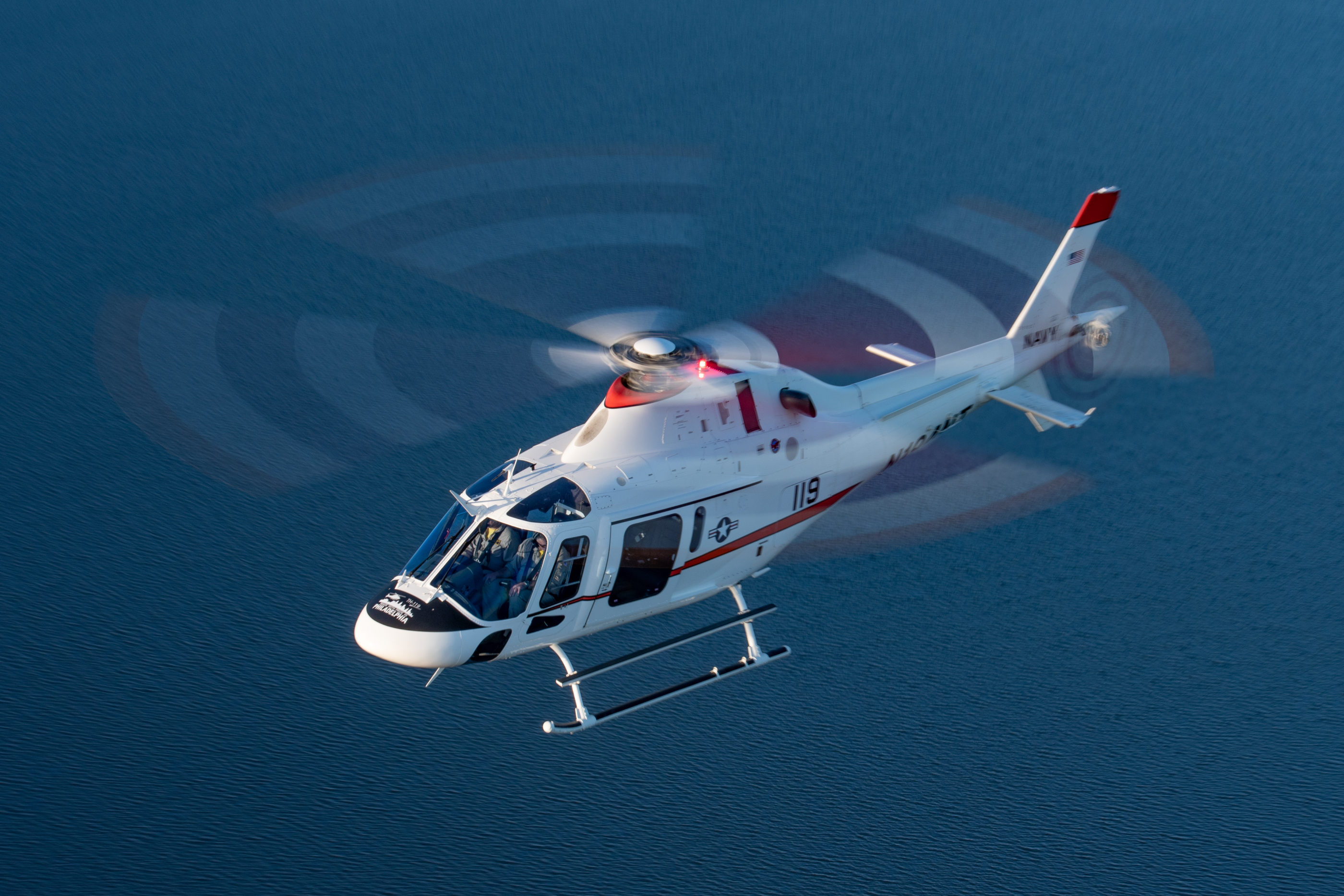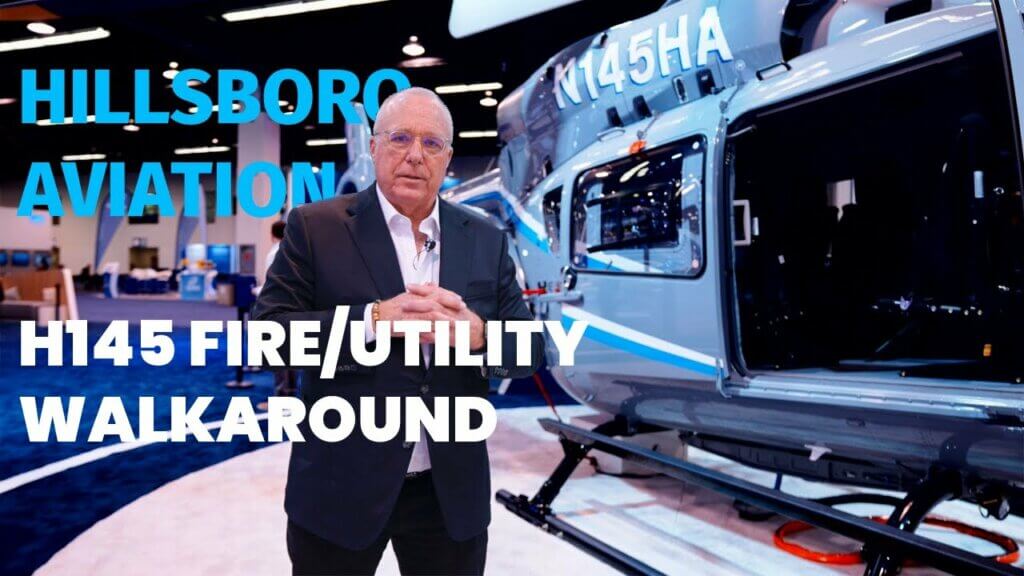Leonardo has committed to offering the single engine TH-119 as a “full-spectrum,” instrument flight rules (IFR)-certified training helicopter for the U.S. Navy’s helicopter trainer replacement program.

The U.S. Naval Air Systems Command (NAVAIR) issued a request for proposal (RFP) on Jan. 28 for the procurement of a new fleet of 130 training helicopters to replace the Navy’s aging fleet of TH-57 Sea Ranger helicopters. Responses to the RFP are due by April 2.
Leonardo’s TH-119 completed its maiden flight in December 2018, and is on track to receive Federal Aviation Administration (FAA) IFR certification early this year, according to Andrew Gappy, TH-119 program manager.
“We are providing the Navy with a fully certified IFR single engine aircraft — the first one to be IFR-certified in decades,” Gappy told reporters during a conference call on Jan. 30. “We’re not asking for any sort of reduction in the requirements [or] any waivers, we’re meeting the full FAA requirements for IFR flight.”
Gappy said the TH-119’s Genesys Aerosystems glass cockpit “results in less costs” and greater flexibility for the customer.
Leonardo chose the Genesys cockpit for the 119 as it allows for instruction from either pilot seat — an aspect Gappy said contributes to the 119’s success as an undergraduate training helicopter.
“The 119 has found a nice amount of interest as a training helicopter, and what we call a full-spectrum training helicopter,” he said. “From that first flight where you’re teaching [students] how to hover, to that last flight where you’re going out on an actual IMC [instrument meteorological conditions], NVG [night vision goggles] or search-and-rescue [mission] . . . one helicopter that does it all is really a nice feature.”
He said the company decided to propose a single engine aircraft rather than a twin engine, like the AW109 Trekker, because singles offer greater training advantages as well as lower costs. Autorotation training is one example he discussed: “The wear and tear on the aircraft limits [twin engine aircraft] from doing continuous autorotations — it’s due to the heavier weight [and] the fact that you have two different engines that have to get rolled to idle and brought back online at the same time.”
“In my opinion, one of the key elements that you get out of undergraduate training down at [Naval Air Station] Whiting Field is that confidence that if I have to do [an autorotation] for real, I can do it because . . . I’ve done it in an aircraft several times successfully,” Gappy added.
He also noted that on average a single engine aircraft is roughly 20 to 25 percent cheaper per hour than a twin engine.
“It is an undergraduate training mission, and cost does matter to the Navy when it comes to this mission,” he said.
The TH-119 is powered by the 1,000-shaft-horsepower Pratt & Whitney Canada PT6-B engine, which allows for “plenty of performance margin and room for growth.”
“The PT6 not only enables that growth, but it enables students to go out, and as they’re learning — especially in the early stages of flight training where they’re learning how to hover [and] learning basic airmanship — it gives them the margin to make a mistake or have a bad day behind the controls and continue to train,” Gappy said.
According to the RFP, NAVAIR intends to award a single firm-fixed-price contract for the procurement of 130 aircraft. Leonardo plans to fully manufacture them at its Philadelphia facility, which is currently the only facility in the world capable of producing the 119.
The future Navy training helicopter will be manufactured as Navy-registered aircraft, according to the RFP, but the Navy will try to maintain the airworthiness of the helicopters.
The IFR-certified TH-119 will receive full commercial FAA certification, so the aircraft will not be restricted from commercial customers. To date, over 300 119 aircraft have been produced, which includes the Koala, Ka and Kx variants.
The recently announced RFP also outlined the expected rate of production to be no more than four aircraft delivered per month in the first year, and no more than three per month in subsequent years. The rate will be roughly 32 to 36 aircraft for the first four years, with the fifth year being a flex year left to the offerer’s discretion.
NAVAIR anticipates the helicopter trainer replacement contract will be awarded in the first quarter of fiscal 2020.










If the 119 handles like the 109, it will be a great training platform for the Navy for both VFR and IFR training. My experience in the 109 found it to be a very stable instrument helicopter, and it cruises at a speed comparable to what they will find in the Fleet.